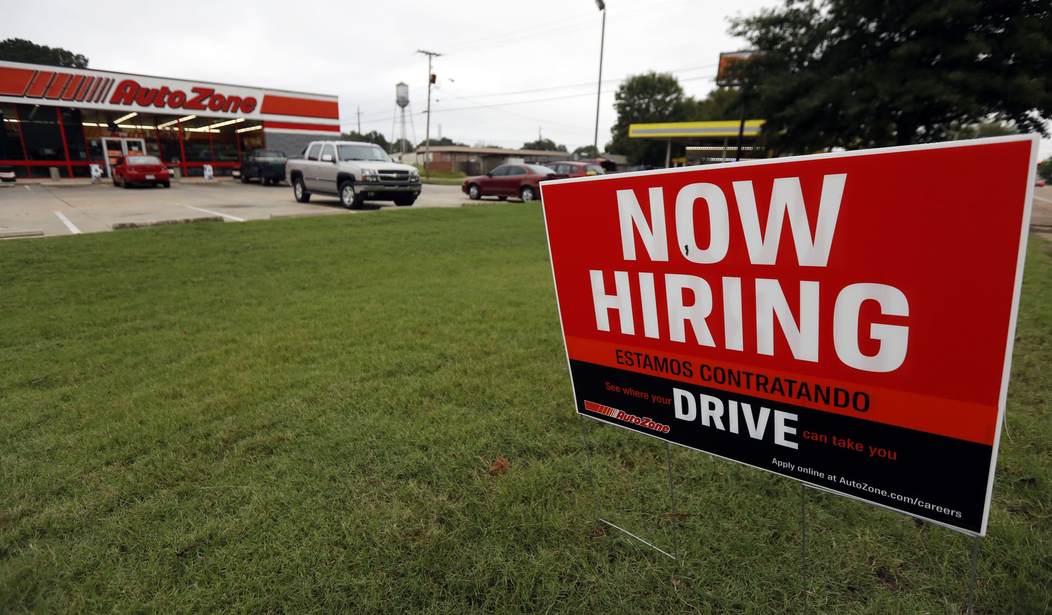Whatever ADP saw in May, the Bureau of Labor Statistics missed — or vice versa. Despite some warning signals, job growth continued in May at roughly the same pace as the past year, adding 390,000 jobs to the US economy. Unemployment remained steady at 3.6%, a result that incrementally beat economists’ expectations:
Total nonfarm payroll employment rose by 390,000 in May, and the unemployment rate remained at 3.6 percent, the U.S. Bureau of Labor Statistics reported today. Notable job gains occurred in leisure and hospitality, in professional and business services, and in transportation and warehousing. Employment in retail trade declined. …
Both the labor force participation rate, at 62.3 percent, and the employment-population ratio, at 60.1 percent, were little changed over the month. Both measures are 1.1 percentage points below their February 2020 values. (See table A-1.)
Wages increased as well, but not nearly enough to keep up with inflation:
Average hourly earnings for all employees on private nonfarm payrolls rose by 10 cents, or 0.3 percent, to $31.95 in May. Over the past 12 months, average hourly earnings have increased by 5.2 percent. In May, average hourly earnings of private-sector production and nonsupervisory employees rose by 15 cents, or 0.6 percent, to $27.33.
Another outcome signaled that the expansion could be slowing down, however. Almost as many jobs as those added got pushed into part-time status for economic reasons, a signal that businesses may be preparing for some stormy weather:
The number of persons employed part time for economic reasons increased by 295,000 to 4.3 million in May, reflecting an increase in the number of persons whose hours were cut due to slack work or business conditions. The number of persons employed part time for economic reasons is little different from its February 2020 level. These individuals, who would have preferred full-time employment, were working part time because their hours had been reduced or they were unable to find full-time jobs. (See table A-8.)
CNN cites the topline as a “slower pace of hiring,” but it’s not much off the track. For the past year, job growth has averaged somewhere around 400,000 a month. This might look like a slight cooldown, but it’s in a statistically insignificant variation from that average. However, the pace of wage growth did seem to fall off in May, at least against expectations, and that is another sign that the jobs market could be softening, at least a little bit:
Average hourly earnings increased 0.3% from April, slightly lower than the 0.4% estimate. The year-over-year increase for wages of 5.2% was about in line with expectations.
Another potential signal of trouble ahead is where the jobs came … and where they went. Retail jobs dropped by over 60,000, which either indicates that retailers are seeing less need for personnel, or their employees are tiring of the work. Either way, it portends less consumer spending at the retail level. The biggest increases in employment came in the professional/business services, education, and leisure/hospitality industries, but only in education was growth well above previous periods.
As for the overall rate of job growth, that number looks pretty solid. But it’s still well worth nothing that it will take a long time for us to fully recover at this rate of job growth from the pandemic job destruction of April 2022. I wrote about this yesterday in my analysis of the ADP report, but I’ll update it here with the new numbers.
In February 2020 before the pandemic forced the destruction of 20 million jobs, the US employed 152,504,000 people. As of the May 2022 jobs report, the US employs 151,682,000 people. That leaves the US 822,000 jobs short of where we started. That, however, is just the static analysis, not the proper calculation for the job creation that should have come in a dynamically growing population. At a population growth rate of roughly 2 million a year and an employment-population ratio of 60%, we are short an additional 2.4 million jobs, leaving us closer to 3.2 million jobs short of where we should be without the pandemic.
Assuming that we need 120,000 jobs a month to keep up with population growth, it would take another full year of 400K/month job growth to get to a full recovery. The numbers here, and the actions coming from the Federal Reserve, are signaling that we will fall short, perhaps for a very long time.








Join the conversation as a VIP Member